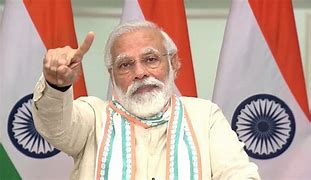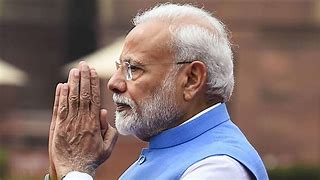World
Technology tops Modi agenda on West Coast

By Arun Kumar
Washington: As Prime Minister Narendra Modi heads to Silicon Valley, the US media noted that like Chinese president Xi Jinping, the technology industry will play a central role in his discussions there.
Xi who started his US visit in Seattle with a meeting with tech leaders Wedenday, the day Modi landed in New York to woo investors, was hosted for a state dinner by President Barack Obama Friday after two days of talks.
But unlike Xi, Modi’s “whirlwind tour of Silicon Valley, including visits to Tesla, Stanford, Google and Facebook,” according to the New York Times , “is more likely to be a celebration than a tense discussions about hacking and security restrictions.”
“A number of tech leaders, including top executives of Microsoft and Google and several influential venture capitalists, are Indian-American,” it noted.
“And Indians are a fast-growing part of Silicon Valley’s engineering and business circles.”
“Modi, a technophile who regularly posts on Facebook and Twitter, is expected to spend much of his time courting Silicon Valley to do business in India even as he calls attention to his country’s influence on the technology industry,” the Times said.
The USA Today said Modi “swinging through Silicon Valley …was looking to raise his country’s profile on the global stage.
“Modi sees technology as vital to bringing more economic growth to India,” it said.
He has “launched an ambitious set of ‘Digital India’ initiatives to create more tech jobs, increase electronics manufacturing, expand Internet access to thousands of Indian villages and develop mobile apps to improve government services.”
“Some of those efforts have raised concerns about digital privacy,” USA Today said calling them “a faint echo of the concerns that swirled around” Xi”s visit with US tech leaders this week.
“Modi is capitalising on growing interest and investment by global investors in Indian start-ups,” it said.
“His visit also affords Facebook and Google the opportunity to press him on issues such as India’s unreliable infrastructure, slow Internet speeds, bureaucratic red tape and confusing tax laws, all of which have slowed investment,” USA Today said.
Milpitas Patch reported that a community reception Sunday at the SAP Centre organized by Indo American Community of West Coast will be attended by several elected officials. They include House Democratic Minority Leader Nancy Pelosi and Representatives Eric Swalwell and John Garamendi.
“This visit really amplifies San Jose’s opportunity to take the city to the next level, to play on an international stage,” Mayor Sam Liccardo was quoted as saying. “We’re proud to be a community in Silicon Valley where over 200,000 Indian-Americans have enriched our community,” he said.
Ash Kalra, the first Indian-American to serve on the City Council, said Silicon Valley should play a role in the prime minister’s vision for a “digital India.”
Kalra, said he sees Modi’s visit as the start of a partnership between India and the city of San Jose.
“The key goal of the visit is to bring the innovation mindset, innovation culture we have here in the valley to India,” entrepreneur and event co-chair Naren Gupta said Gupta said.
World
Lockdowns in China Force Urban Communities to Defy Censorship and Vent Frustration Online

Shanghai’s rich middle class is leading a wave of online dissent over the strict and prolonged lockdowns imposed in various parts of the country. Chinese internet censorship is struggling as patience is wearing thin in many urban centers, coming up with creative forms of online protests.
Social Media Posts Revealing Lockdown Tension in Shanghai
Drawn-out lockdowns are nothing new in China as authorities insist with the nation’s zero-Covid policy since the start of the pandemic. Currently over This time around, however, metropolitan areas like Shanghai are increasingly difficult to keep quiet, given that its more than 25 million residents have seen weeks of total isolation along with food shortages and many other service interruptions.
Dozens of towns and reportedly over 300 million Chinese citizens have been affected by lockdowns of different severity. As expected, urban netizens have been most outspoken over their difficulties by finding creative ways to get around state censorship and bans placed on topics, news comments and spontaneous campaigns.
Shanghai residents have been using mobile proxies and hijacking seemingly unrelated hashtags to talk about healthcare issues, delivery failures and the overall severity of their situation. The “positive energy” that the Chinese government wants to transmit during the recent prolonged series of lockdowns does not come naturally to those counting food supplies and online censors are working hard to filter words, trending topics and undesired social media sharing.
WeChat groups and message threads are under constant monitoring. Posts questioning the zero-Covid approach have been quickly deleted, including by leading Chinese health experts like Dr. Zhong Nanshan. Video footage is soon censored and protests and investigations are quickly made to disappear.
Where this has not worked, officials have exposed banners with warnings and outright threats like “watch your own mouth or face punishment”, while drones have been patrolling the city skies. Yet, if anything, this has led to further tensions and unspoken confrontation with Shanghai’s educated and affluent middle class.
Creative Online Solutions Harnessing Civic Energy
Announcements by Chinese social media that they would be publishing the IP addresses of users who “spread rumors” have not helped either. Tech industry research has shown that much of Asia’s tech-savvy population has a habit of using mobile proxies and other privacy tools, quickly finding workarounds to browse the internet freely and talk to the world about the hottest topics.
The sheer volume of forbidden posts is already a challenge for the very censorship system, experts explain. Unable to track all trending hashtags, state workers overlook topics that speak about the US, Ukraine or other popular news. Linking human rights elsewhere to their situation, Chinese online dissidents establish their informal channels and “hijack” the conversation to share personal or publicly relevant information about the Covid suppression in their town.
Sarcastic and satirical posts still dominate. Others hope to evade the censors by replacing words from famous poems or the national anthem. One thing is certain – social media, when harnessed with the right creativity, has proven its ability to mount pressure on the government in even some of the most strictly controlled tech environments like China.























